TL;DR
- Select libraries by required features, app complexity, learning time, support quality, and inter-library compatibility.
- Covers Angular Material, CLI, NgRx, AngularFire, Flex Layout, charts, maps, drag-drop, and datatables.
- Key capabilities: responsive UI, state management, real-time data, and rapid project scaffolding.
- Research update cadence and integration fit to ensure scalable, maintainable Angular apps.
Fact Box
Choosing the right Angular libraries for your next web app can be an intimidating task. With so many options available, it can be difficult to decide which libraries are best suited for your project. However, by considering factors such as the size of your project, the complexity of your app, and the features you need, you can narrow down your choices and make an informed decision. Additionally, it’s important to take into account the amount of time you have to invest in learning and implementing the libraries. This article will provide an overview of the available libraries and the factors to consider when selecting the right ones for your project.
What is Angular?
Angular is an open-source web application framework developed and maintained by Google. Leveraging Angular in the development of business software empowers organizations to create highly interactive and efficient applications that streamline operations and improve the user experience in the enterprise environment.
By offering a framework for client-side model-view-controller (MVC) and model-view-view model (MVVM) architectures, together with components frequently used in rich web applications, Angular is used to construct single-page applications and is also intended to make development and testing easier.
When building an Angular application, it is important to select the right libraries and frameworks to ensure the success of your project. Choosing the right Angular libraries for your next web app requires careful consideration of the features you need, the size and complexity of your project, and the amount of time you have to invest in learning and implementing them. It is important to select reliable, well-supported, and regularly updated libraries. Additionally, it is important to select libraries that are compatible with each other and will integrate seamlessly with your app. By taking the time to research and compare the available libraries, you can ensure that you select the right ones for your project.
How to choose the right Angular library?
When selecting libraries for your web app, there are several important factors to consider:
- Consider the features you need for your web app.
- Evaluate the size and complexity of your project.
- Consider the amount of time you have to invest in learning and implementing the libraries.
- Choose libraries that are reliable, well-supported, and regularly updated.
- Select libraries that are compatible with each other and will integrate seamlessly with your app.
- Research and compare the available libraries to ensure you select the right ones for your project.

When developing an Angular web application, there are several popular libraries available. Each library has its own set of features and advantages, so it’s important to choose the library that is best suited to your project. The following are some of the most popular Angular libraries.
Angular Material
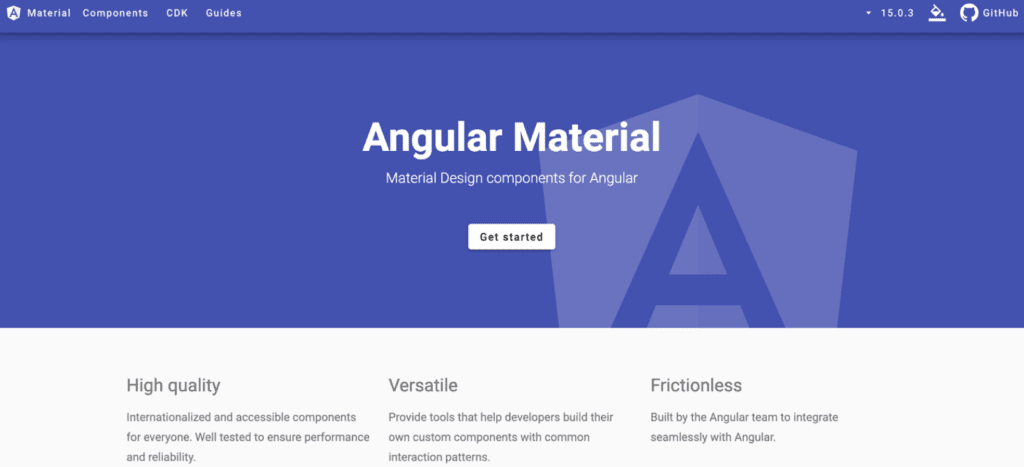
GitHub Stars: 23.2k
License: MIT
Angular Material is a UI component library for Angular applications that provides a wide range of components for designing user interfaces. It is based on Google’s Material Design language and is used to create responsive and accessible web applications. It offers a set of reusable, well-tested, and accessible UI components based on the Material Design system. Angular Material also provides an extensive theming system, allowing developers to easily customize the look and feel of their web applications.
Angular Material provides an intuitive and efficient way to create a modern, interactive web app. It also offers an extensive collection of components that help developers quickly and easily build an interface. With Angular Material, developers can easily implement components such as buttons, cards, input fields, sliders, and more. Additionally, Angular Material is fully responsive, meaning the web app will look great on any device. Finally, Angular Material is heavily documented and supported, making it easy to get help if needed.
The key features of the Angular Material library are:
- Set of reusable, well-tested, and accessible UI components based on the Material Design system.
- An intuitive and efficient way to create a modern, interactive web app.
- Extensive theming system for easily customizing the look and feel of the web app.
- Fully responsive design, making the web app look great on any device.
- Heavily documented and supported, making it easy to get help if needed.
- Easy-to-implement components include buttons, cards, input fields, sliders, and more.
AngularFire
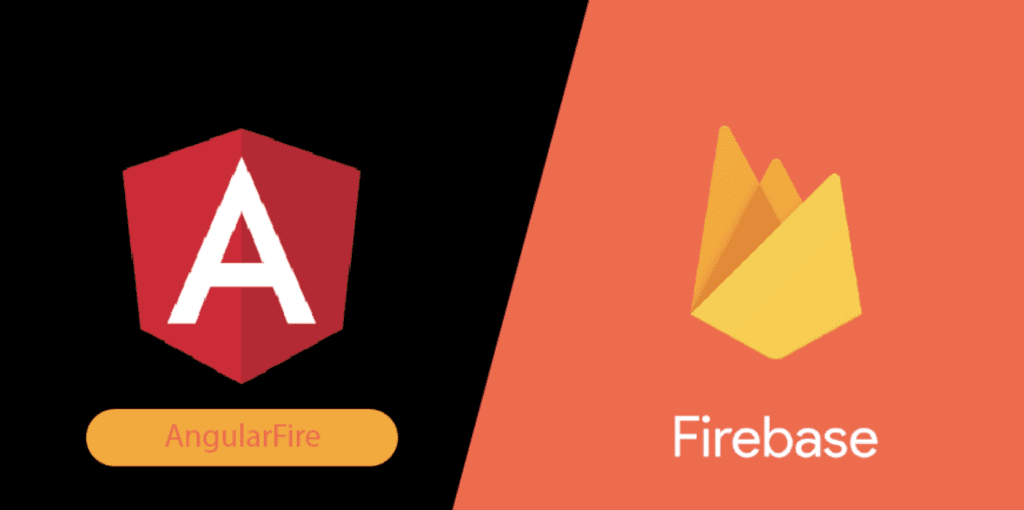
GitHub Stars: 7.3k
License: MIT
AngularFire is a library for Angular applications that provides an easy-to-use API for interacting with the Firebase real-time database. It is designed to make it easier for developers to add real-time features to their web apps, such as data synchronization, authentication, and more. It also provides an interface for developers to access Firebase services such as Cloud Storage, Cloud Functions, and Firebase Hosting.
AngularFire offers many features that make it easier for developers to build web apps with real-time features:
- Easy-to-use API for interacting with the Firebase real-time database.
- Supports real-time synchronization of data across multiple clients.
- It provides an authentication system that allows users to easily sign up and log in to the app.
- Access to Firebase services such as Cloud Storage, Functions, and Firebase Hosting.
- Simple and intuitive interface for developers to quickly get up and running with their projects.
- Supports a variety of platforms, including Angular, React, and Vue.
Angular CLI
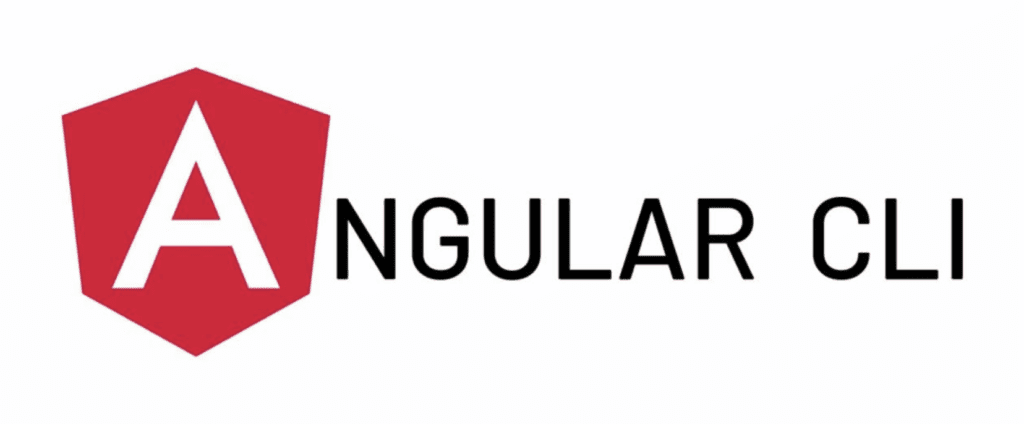
GitHub Stars: 25.9k
License: MIT
Angular CLI is a command line interface for creating, building, and deploying Angular applications. It is designed to make it easier for developers to quickly create, build, and deploy their apps. It provides an intuitive scaffolding system for quickly setting up a new project and generates code for common tasks such as routing, tests, and components. It also allows developers to easily serve their apps locally and deploy them to production with a single command.
Angular CLI makes it easy for developers to create, build, and deploy their apps. It offers a variety of tools and commands to help developers quickly set up their projects and generate code. Additionally, it provides an intuitive scaffolding system for quickly creating new projects and components. Angular CLI also allows developers to easily serve their apps locally and deploy them to production with a single command. Finally, it supports a variety of third-party libraries, making it easy to integrate other tools and frameworks into the development process.
The key features of the Angular CLI library are:
- Command line interface for creating, building, and deploying Angular applications.
- Intuitive scaffolding system for quickly setting up a new project.
- Generates code for common tasks such as routing, tests, and components.
- Ability to easily serve apps locally and deploy them to production with a single command.
- Supports a variety of third-party libraries, making it easy to integrate other tools and frameworks.
- Offers a variety of tools and commands to help developers quickly set up their projects.
Angular UI Bootstrap
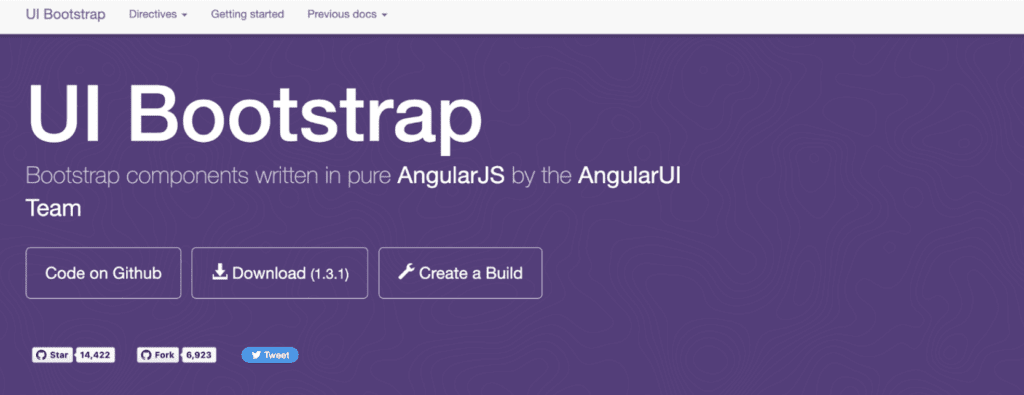
GitHub Stars: 14.4k
License: MIT
Angular UI Bootstrap is a library that provides a set of directives for creating user interfaces based on Twitter Bootstrap. It is designed to make it easier for developers to create responsive, mobile-friendly web applications. It offers a wide range of components, such as alerts, buttons, carousels, and more, that can be used to create interactive and visually appealing user interfaces. Additionally, it is also well documented and supported, making it easy to get help if needed. Angular UI Bootstrap is a library that simplifies the process of creating user interfaces. It offers a wide range of directives that can be used to create responsive, mobile-friendly web applications.
The key features of the Angular UI Bootstrap library are:
- Set of directives for creating user interfaces based on Twitter Bootstrap.
- Ability to create responsive, mobile-friendly web applications.
- A wide range of components, such as alerts, buttons, carousels, and more, can be used to create interactive and visually appealing user interfaces.
- Pre-built components that can be easily integrated into the web application.
- Well-documented and supported, making it easy to get help if needed.
- An intuitive and efficient way to create interactive and visually appealing user interfaces.
Angular Flex Layout
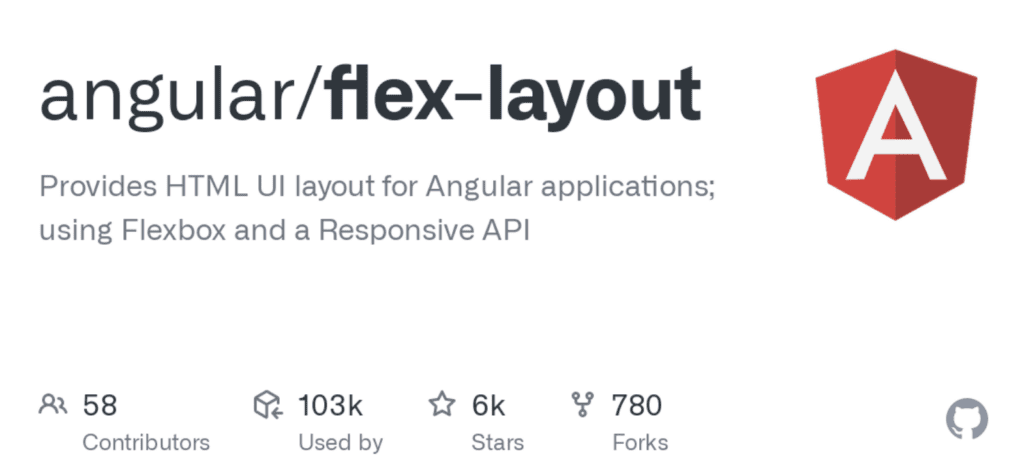
GitHub Stars: 6k
License: MIT
Angular Flex-Layout is a library that provides a responsive layout system for building Angular applications. It is designed to make it easier for developers to create flexible and responsive user interfaces, regardless of the device or screen size. It offers a wide range of directives that can be used to create fluid, responsive layouts, such as the fxLayout and fxFlex directives. Additionally, it also provides an API for creating custom responsive layouts and components. It is also well-documented and supported, making it easy to get help if needed.
Angular Flex-Layout helps developers create responsive and fluid layouts that are optimized for different devices and screen sizes. It offers a range of directives, such as the fxLayout and fxFlex directives, that can be used to create responsive layouts. Additionally, it provides an API for creating custom responsive layouts and components. It also allows developers to easily manage their layout sizes and breakpoints.
The key features of the Angular Flex-Layout library are:
- Provides a responsive layout system for building Angular applications.
- A wide range of directives, such as the fxLayout and fxFlex directives, can be used to create fluid and responsive layouts.
- API for creating custom responsive layouts and components.
- Ability to easily manage layout sizes and breakpoints.
- Well-documented and supported, making it easy to get help if needed.
- Allows developers to create flexible and responsive user interfaces.
NgRx

GitHub Stars: 7.4k
License: MIT
NgRx is a library for Angular applications that provides a state management system for managing data in complex applications. It is designed to make it easier for developers to create, maintain, and test their applications. It offers a set of APIs and tools for managing data predictably and consistently. Additionally, it also provides an intuitive interface for easily managing and updating the state of the application.
The key features of the NgRx library are:
- Provides a state management system for managing data in complex applications.
- Set of APIs and tools for managing data predictably and consistently.
- Intuitive interface for easily managing and updating the state of the application.
- Powerful debugging tool for tracking and tracing state changes.
- Well-documented and supported, making it easy to get help if needed.
- Making it easier to create, maintain, and test applications.
Angular Charts
GitHub Stars: 2.2k
License: MIT
The Angular Charts library is an open-source library created by the Angular team that provides a declarative API for creating interactive charts in your Angular application. It supports multiple chart types, including line, bar, area, pie, doughnut, and scatter charts. It also offers various customization options for styling and animation.
The key features of the Angular Charts library include:
- Declarative API for creating charts in Angular applications – Support for various chart types, including line, bar, area, pie, doughnut, and scatter charts
- Ability to customize styling, animation, and other properties of charts
- Support for interactive features, such as zooming and hovering
- Ability to integrate with other libraries, such as D3.js for more advanced features
- Support for multiple data sources, including static data, remote REST APIs, and real-time data streams
- Support for multiple browsers, including Chrome, Firefox, Safari, and Edge
Angular2-Google-Maps
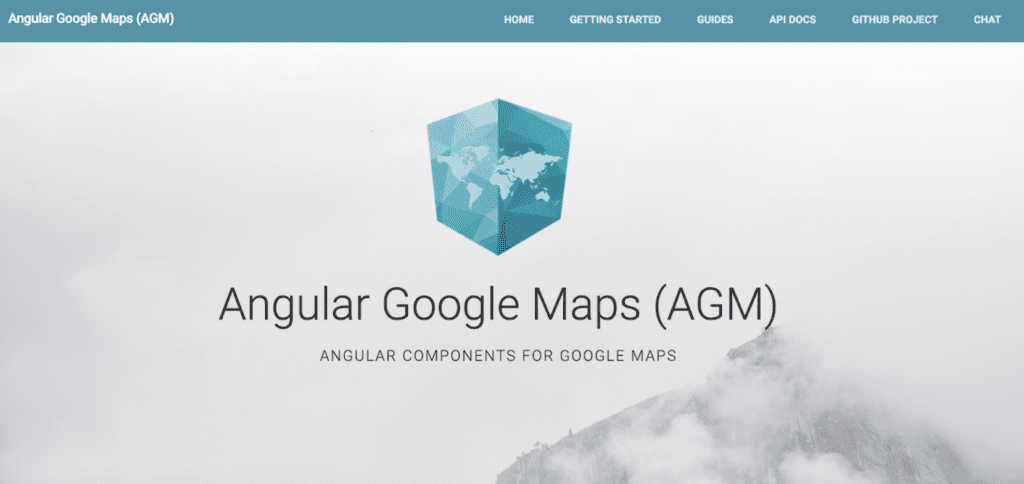
GitHub Stars: 2k
License: MIT
Angular2-Google-Maps is an open-source library created by the Angular team that provides an easy-to-use interface for integrating Google Maps into your Angular applications. It features a declarative API for creating map components, allowing you to specify the map’s center, zoom level, markers, and other properties. It also offers various customization options for styling and animation. Key features include:
- Declarative API for creating Google Maps components
- Ability to specify various properties, such as center, zoom level, markers, and more
- Support for various customization options, such as styling and animation
- Ability to integrate with other libraries, such as D3.js for more advanced features
- Support for multiple data sources, including static data, remote REST APIs, and real-time data streams
- Support for multiple browsers, including Chrome, Firefox, Safari, and Edge
Angular-Draggable
GitHub Stars: 126
License: MIT
The Angular-Draggable library is an open-source library for creating draggable and resizable user interfaces with Angular, a popular JavaScript framework. It supports handling drag events, resizing elements, and snapping elements to other elements or the grid. The library also supports customizing drag handles, providing draggable elements with a placeholder, and customizing the draggable element’s style. Some of the key features of Angular-Draggable are:
- Drag and drop functionality with customizable options
- Resizable elements with snap options
- Customizable drag handles
- Placeholder support
- Customizable styles
- Easily integrate with other Angular components
Ngx-datatable
GitHub Stars: 4.5k
License: MIT
Ngx-datatable is an open-source library that allows developers to easily create dynamic and responsive tables with advanced features such as sorting, filtering, and pagination. It is also optimized for performance, allowing developers to quickly render large data sets without sacrificing performance. Ngx-datatable supports a wide range of data sources, including JSON, CSV, and OData. It also supports client-side or server-side data processing and can be further customized using custom templates and styles.
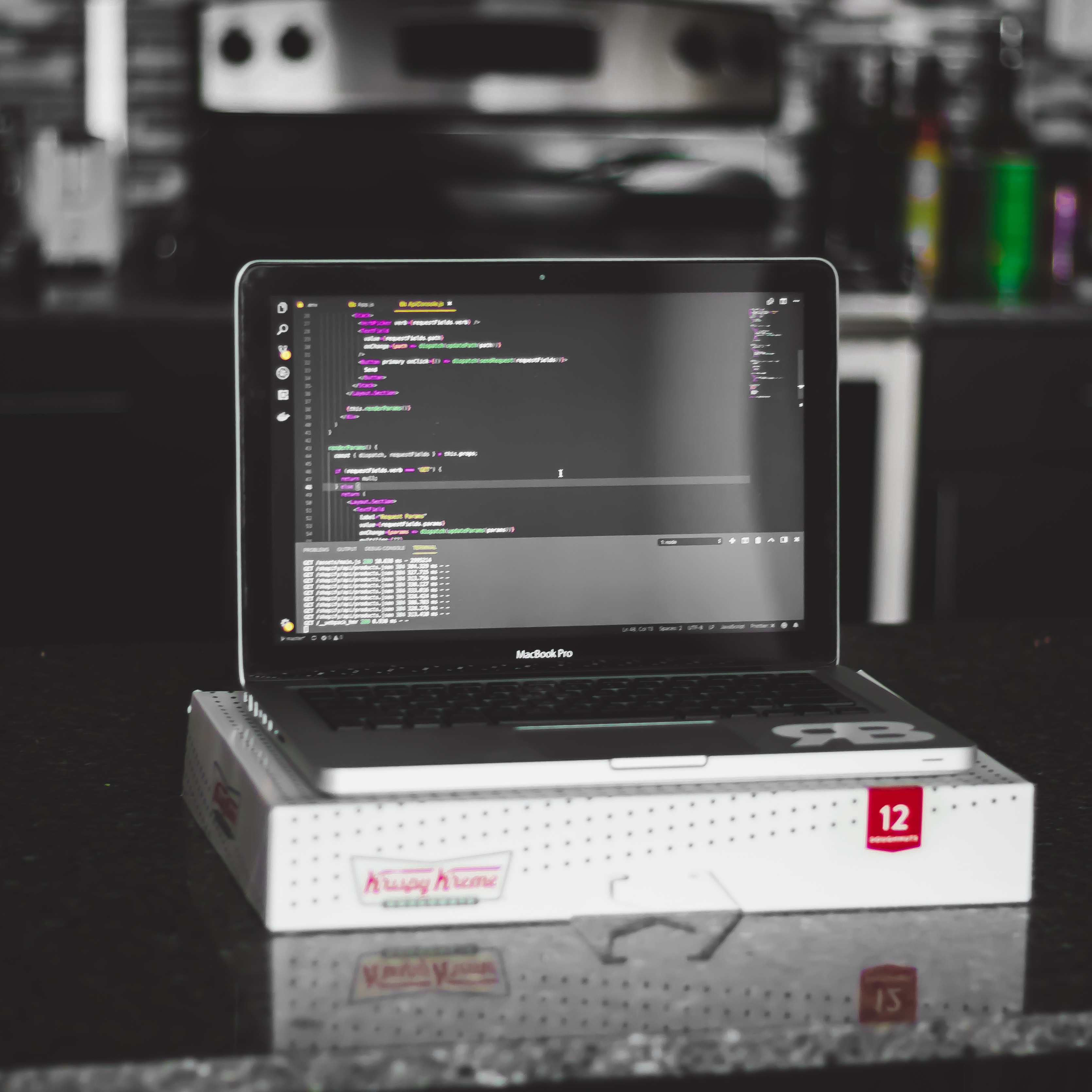
In Flatlogic we create web & mobile application templates built with React, Vue, Angular and React Native to help you develop web & mobile apps faster. Go and check out yourself!
See our themes!
The key features of the Ngx-datatable library are:
- Flexible data binding: Ngx-datatable supports both local and remote data binding, allowing you to easily bind data from various data sources.
- Advanced filtering and sorting: Ngx-datatable allows you to quickly filter and sort data, making it easier to find the information you need.
- Column resizing: You can resize columns to fit the table’s width or accommodate different data types.
- Row virtualization: Ngx-datatable renders rows only when they are visible, which means you can scroll through large data sets without any performance issues.
- Column reordering: Columns can be reordered, allowing you to customize the table’s layout.
- Editable cells: You can make specific cells in the table editable, allowing users to quickly update data
Summing Up
Incorporating the appropriate Angular libraries into your business software development strategy can significantly enhance the application’s capabilities, ensuring it meets the complex demands of modern business environments with efficiency and scalability. With the right libraries, you can quickly build out an app without spending a lot of time and effort on development. When choosing libraries, it’s important to consider the features and functionality the library provides, as well as the performance and scalability of the library. Additionally, consider the cost of the library and the level of support it offers. By evaluating your needs and researching the available Angular libraries, you can make an informed decision and choose the best library for your web application.
Comments